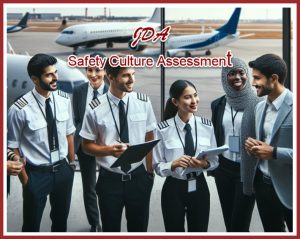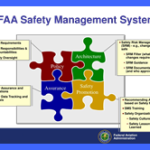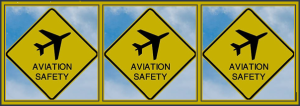Insights from panel of SMS experts should cure the worriers

ICAO, FAA, EASA and most major aviation safety organizations[1] have made SAFETY MANAGEMENT SYSTEMS (SMS) the cornerstone of their regulatory discipline for preventative identification of and action on RISKS. As these authorities have expanded the applicability of this program to other aviation certificates (regional Part 135; air taxis, TC/PC holders, airports and MROs Part 145), these new participants have expressed concerns that their operations do not easily fit into their regimens.
Some of this apprehension derives from the SMS programs implemented with the Part 121 carriers. Indeed, aviation entities with large, complex, global, multifaceted operations have designed policies, procedures and the dreaded paperwork (electronic versions) that encompass all safety-related aspects of their companies.
Aviation Maintenance Magazine (article below) convened a virtual dialogue with three professionals who are knowledgeable about what SMS is, what it takes to install it and where this risk management is going (up). Their comments are reassuring for anyone weary of committing to SMS. Here are a few of their salient comments:
- “…real-time data from flight operations and maintenance records is being used to identify patterns that could indicate potential hazards.”
- SMS connects with operational data sources (like FDM) and through that the operator receives information that may detect a potential problem before it becomes a real problem. The designing of the preventative solution is facilitated by the information in the data base. Experts can tailor your SMS programing to capture points relevant to your risk profile.
- “robust safety culture”
- The primary target for this important aspect of initiating SMS is all of the organization. The first step in creating SMS apostles is to inculcate your leaders in SMS principles, practices and MOST IMPORTANTLY SAFETY BENFITS.

This introduction should be done with someone who not only knows the subject, but whose experience, in a variety of companies, adds to the credibility of the message.
- “Greater collaboration between regulators and industry will be important in refining what effective SMS implementation looks like across diverse operations. In the near future, insurance underwriters and insurance brokers may require charter operators to have an SMS program before they offer them a policy.”
- This comment highlights two important observations about SMS:
- The first point signals that it is not just industry that is adapting to SMS; the FAA is learning by experience (“collaboration between”). As the regulators work through each implementation assignment, they learn how SMS can be crafted to meet the unique needs of each regulated organization. As the number of valuable learning experiences mount, FAA FLEXIBILITY grows through these practical This also suggests that subject matter experts who have been through many such interactions with the FAA are MORE LIKELY TO BE AWARE OF THESE NUANCES.
- The last sentence is REALLY about the value, both SAFETY and FINANCIAL, that derives from SMS. Know it that INSURANCE COMPANIES only discount their rates IF AND ONLY IF, the attached requirement, SMS here, reduces the likelihood that the policy holder will be making CLAIMS. Hint: they recognize that SMS works.

- “operators to identify real capability gaps and deliver tools, assessments, and coaching that align with their specific operational needs and maturity levels”
- Individuation is one of the lesser recognized aspects of SMS.
- In the past safety solutions went through the slow NPRM process; so, the time between identified problem and change was an unnecessary gap. Now with the SMS review process, the company can implement improvements as soon as possible.
- Individuation has another benefit—a solution for a carrier that has a lot of transatlantic flights can address an issue in a way that would be totally inapposite to a short haul airline. SMS’s focus on an individual problem likely will create a design that works without compelling compliance for all P121 operators. If the fix works and its remedial aspect works for another, COPYING IS ALLOWED- no delay.
- “evolving from a compliance-focused framework to a more integrated, data-informed safety culture.”
- SMS encourages reporting of mistakes so that all can learn. To maximize the depth and breadth of the information, the FAA has instituted an exemption from enforcement, under specific limitations, when a report may include a violation. The foundation for this policy is that “humans make mistakes and punishment is not appropriate when the error was unintentional.
- All of the panel agree with this trend line to data-informed approach. With FDM, FOQA, ASIAS, ASRS, SAS, and other automated reporting resources, the recordkeeping burden is not great. The SMS algorithms analyze the numbers, provide risk rankings, cost data, so the team administering SAFETY can focus on the risk indicators and defining solutions.
- “work directly with operators to identify real capability gaps and deliver tools, assessments, and coaching that align with their specific operational needs and maturity levels.”

- “smaller operators are now recognizing the value of structured safety systems to prevent incidents and enhance compliance.”
- These two separate comments highlight the importance of working with experts who have significant SMS experience. They have dealt with situations that merited KISS approaches, know about the FAA’s willingness to be FLEXIBLE and can fit one of these past options to the specifics of your operation.
- Whether the past work was with a similar situation or even when the prior client was not 100% comparable [link to the JDA team], the past creative technique may be revised to address a different operation.
- The critical words in the comments are “working directly..” The consultant guides and the company MUST be deeply involved/committed to designing the details of SMS. This core group needs to inculcate all levels of the aviation entity—from the Board of Directors through all the intervening layers to the professionals who work where “rubber meets the road.” This effort is not just confined to those directly in the operational silo but must include all in the company. Reaching 100% of the organization is a real measure of SAFETY CULTURE.

- Individuation is one of the lesser recognized aspects of SMS.
- This comment highlights two important observations about SMS:
Reading the below dialogue with these experts should assuage your worries about SMS. The FAA has made it clear that the policies and procedures for those applying 14 CCR Part 5 are not set in stone, will be thoughtfully applied to your operation (INDIVIDUATION) and as recognized by the PARSIMONIOUS INSURANCE INDUSTRY, SAFETY THAT RESULTS IN LOWERED RISKS.
Advances in SMS: An Aviation Maintenance Virtual Roundtable
Jun 24, 2025
Once seen as bureaucratic obligations, SAFETY MANAGEMENT SYSTEMS (SMS) have evolved into dynamic, data-driven ecosystems that support informed decision-making across aviation operations and maintenance, and even boardrooms. In this Aviation Maintenance ‘virtual roundtable’ discussion, three SMS industry leaders take a look at what SMS is, where it is headed, and why operators should care about SMS more than ever.
Aviation Maintenance: Let’s begin by asking each of you to introduce yourself, and to tell us about your role in aviation SMS.
Chris Howell: I am CEO at NorthWest Data Solutions…
Chris Hill: I am the senior director of safety at Vertical Aviation International (VAI)…
Debi Carpenter: executive director of the Air Charter Safety Foundation,
Aviation Maintenance: Thanks! So, to begin with, what trends are driving the SMS market today?
Chris Howell: The SMS market is evolving rapidly, driven by several key trends.
First, there’s a strong shift toward data-driven safety management, with organizations leveraging advanced analytics and artificial intelligence to predict and mitigate risks proactively. For instance, real-time data from flight operations and maintenance records is being used to identify patterns that could indicate potential hazards.
Second, there’s a growing emphasis on integrating SMS across all aviation domains, including manufacturers and air traffic control, as regulators like the FAA expand requirements and oversight capabilities. Finally, fostering a robust safety culture remains critical, with more organizations adopting anonymous reporting systems to encourage open hazard identification, which has led to a notable increase in reported safety issues.
Debi Carpenter: The integration of AI and predictive analytics is a major trend driving SMS these days. AI is a great way to enhance hazard identification and risk assessment. Predictive analytics tools can forecast potential safety issues, which helps to be more proactive and more informed for decision-making.
Additionally, there is a rising emphasis on FDM (Flight Data Management), which adds objective data to support a Safety Management System. Within the framework of the SMS, FDM provides insight into what’s really happening during flights, so operators can spot patterns, fix issues early, and continually improve. It’s a powerful way to make sure safety isn’t just a plan — it’s something that’s always improving.
Chris Hill: VAI has partnered with several trusted providers to offer SMS solutions tailored to a wide range of operator sizes and missions. These are not off-the-shelf templates or shelf-sitters. Our partners work directly with operators to identify real capability gaps and deliver tools, assessments, and coaching that align with their specific operational needs and maturity levels.
Chris Howell: The market has seen several innovative SMS products emerge recently… Other notable enhancements include built in a learning management system (LMS), and computer-based training modules for safety procedures, which enhance employee preparedness and reduce human error. These advancements reflect a broader industry push toward technology-enabled safety solutions.
Aviation Maintenance: To close out our discussion, what do you foresee the future holding for SMS?
Chris Howell: Looking ahead, I see SMS becoming even more predictive and interconnected. As artificial intelligence and Internet of Things (IoT) technologies mature, SMS platforms will increasingly anticipate risks by analyzing vast datasets in real time — everything from engine performance to weather patterns. Regulatory harmonization will also play a key role, with global standards like those from ICAO ensuring seamless SMS implementation across borders. Additionally, the rise of autonomous aircraft and urban air mobility will necessitate new SMS frameworks to address unique safety challenges.
Ultimately, SMS will evolve into a cornerstone of aviation operations, prioritizing prevention and fostering a culture of continuous improvement.
Debi Carpenter: I believe SMS will continue evolving from a compliance-focused framework to a more integrated, data-informed safety culture. We’ll likely see broader use of predictive analytics, AI, and real-time data, both at the macro and individual level, to identify and mitigate risks proactively.
I also expect SMS to become more cross-functional and extend beyond flight operations to include maintenance, ground handling and other departments as standard practice. Greater collaboration between regulators and industry will be important in refining what effective SMS implementation looks like across diverse operations. In the near future, insurance underwriters and insurance brokers may require charter operators to have an SMS program before they offer them a policy.
Chris Hill: I am optimistic about the future of SMS. There’s a growing pool of talented professionals committed to simplifying SMS implementation while retaining its core value. The future lies in practical tools and intuitive strategies that make safety management easier to understand and apply.
SMS shouldn’t feel like an unsolvable puzzle. It should be clear, effective, and integrated into everyday operations. We’re moving toward that goal, and the momentum is encouraging.
Chris Hill: The recent expansion of the U.S. Part 5 SMS rule has brought renewed attention to SMS implementation across the industry. In response, VAI is focused on equipping our members with the resources they need to build effective safety management systems that support daily operational risk management.
Despite broad industry support, many smaller operators remain hesitant. We understand their concerns and are working alongside regulators, industry partners, and volunteers to help demystify SMS and emphasize its practical benefits when implemented properly.
With compliance deadlines approaching, we expect to see a spike in attention, some of it sincere, some of it perhaps less so. Regardless, we encourage all operators to pause, assess where they stand, identify gaps, and begin closing them. Don’t wait for a due date or, worse, a preventable tragedy. Take the time now to ask, “What could go wrong today?” and address it before it becomes a regret.
Aviation Maintenance: Has the recent spate of aircraft accidents had an impact on SMS and the use of these systems in aviation?
Chris Hill: I’d like to believe so. Every operator and maintenance provider should use each accident report as an opportunity for reflection and improvement. The findings, causal factors, and recommendations should prompt meaningful conversations and guide practical changes that enhance safety at every level.
Debi Carpenter: We have seen an increase in interest from operators seeking guidance on how to strengthen or implement their SMS…
A number of high-profile aviation accidents have drawn public attention, prompting increased concern even among those who fly privately. Passengers and executives are asking more questions about the safety practices of their operators. In response, we’re helping operators use objective safety data not only as an internal tool, but as a transparent layer that can inform and reassure decision-makers.
Chris Howell: Recent aircraft incidents, such as near-collision events at major U.S. airports, have heightened the focus on SMS adoption. These incidents have underscored the need for proactive risk management, prompting operators — particularly in the Part 135 and general aviation sectors — to accelerate SMS implementation.
While Part 121 operators have long had SMS mandates, smaller operators are now recognizing the value of structured safety systems to prevent incidents and enhance compliance. This increased scrutiny has also driven demand for training programs that strengthen crew resource management and situational awareness, further embedding SMS principles into daily operations.
Aviation Maintenance: Okay, let’s get practical. What new SMS products and services have come onto the market recently, including any of your own?
Debi Carpenter: Over the past year, I’ve seen a range of new SMS products and enhancements across the industry, including improvements in data visualization, accessibility, and integration with other platforms. Some operators are even developing their own in-house SMS tools tailored to their specific needs.
At ACSF, we’ve been focused on making our SMS tools more user-friendly and adaptable across departments to support cross-functional collaboration as well as integrating with other platforms. We also introduced two key initiatives, which I have touched on before…
Chris Hill: VAI has partnered with several trusted providers to offer SMS solutions tailored to a wide range of operator sizes and missions. These are not off-the-shelf templates or shelf-sitters. Our partners work directly with operators to identify real capability gaps and deliver tools, assessments, and coaching that align with their specific operational needs and maturity levels.
Chris Howell: The market has seen several innovative SMS products emerge recently…
Aviation Maintenance: To close out our discussion, what do you foresee the future holding for SMS?
Chris Howell: Looking ahead, I see SMS becoming even more predictive and interconnected. As artificial intelligence and Internet of Things (IoT) technologies mature, SMS platforms will increasingly anticipate risks by analyzing vast datasets in real time — everything from engine performance to weather patterns. Regulatory harmonization will also play a key role, with global standards like those from ICAO ensuring seamless SMS implementation across borders. Additionally, the rise of autonomous aircraft and urban air mobility will necessitate new SMS frameworks to address unique safety challenges.
Ultimately, SMS will evolve into a cornerstone of aviation operations, prioritizing prevention and fostering a culture of continuous improvement.
Debi Carpenter: I believe SMS will continue evolving from a compliance-focused framework to a more integrated, data-informed safety culture. We’ll likely see broader use of predictive analytics, AI, and real-time data, both at the macro and individual level, to identify and mitigate risks proactively.
I also expect SMS to become more cross-functional and extend beyond flight operations to include maintenance, ground handling and other departments as standard practice. GREATER COLLABORATION between regulators and industry will be important in refining what effective SMS implementation looks like across diverse operations. In the near future, insurance underwriters and insurance brokers may require charter operators to have an SMS program before they offer them a policy.
Chris Hill: I am optimistic about the future of SMS. There’s a growing pool of talented professionals committed to simplifying SMS implementation while retaining its core value. The future lies in practical tools and intuitive strategies that make safety management easier to understand and apply.
SMS shouldn’t feel like an unsolvable puzzle. It should be clear, effective, and integrated into everyday operations. We’re moving toward that goal, and the momentum is encouraging.
[1] UK https://www.caa.co.uk/safety-initiatives/working-with-industry/safety-management-systems/safety-management-systems/; GERMANY LBA https://www.lba.de/EN/LBA/Organisation/SBL/SBL2/SBL2_node.html; JCAB Law and Regulations for Aircraft Safety – MLIT Japan; France https://www.ecologie.gouv.fr/en/french-civil-aviation-authority-dgac; Brazil https://www.gov.br/anac/en/topics/safety/brazilian-civil-aviation-safety-programme-pso-br


